#bill millin
Explore tagged Tumblr posts
Text
80 years ago today, Piper Bill and thousands of other heroes risked their lives - and lost their lives - for our freedom.
Please pause and remember them today.
True bravery
Not directly related to Outlander - but I was reminded recently of a true story of outstanding courage and bravery. It will give you chills.
A few years ago, a man named Bill Millin died. You don’t know his name - there’s no reason for you to - but he played a small role in perhaps *the* most crucial battle in the history of modern warfare.
You see, Bill Millin was a piper. A Scotsman, who - apart from one remarkable day - led a mostly quiet, normal life. But he landed with the British Army at Normandy, on D-Day, wearing his father’s kilt, armed with nothing but his bagpipes and sgian dhu. He played his bagpipes as the soldiers stormed the beach. He walked around on the beach, playing his pipes, as the British Army attacked the Germans. Just like his ancestors had played bagpipes on battlefields. He gave his countrymen strength. Gave them comfort, as they died. Gave them a reminder of home.
Take a second to think about how brave that is. How brave he was. And how amazing it is that he survived.
And what’s even more amazing about this - and this is the tiny tie-in to Outlander - is that he was commanded by Simon Fraser, Lord Lovat. Yes, *that* Fraser of Lovat.
Here is an excerpt from his obituary in the Washington Post. Read the whole thing, Google him even. There are some adorable interviews of older Bill on YouTube.
What a class act Mr. Millin was. An example of such bravery, amid something so terrible. True heroism.
—–
Dressed in the kilt his father wore in World War I and armed with only a ceremonial dagger, Mr. Millin was a 21-year-old soldier attached to the 1st Special Service Brigade led by Simon Fraser, better known by his Scottish clan title, Lord Lovat. As Lovat’s personal piper, Mr. Millin played rousing renditions of “Highland Laddie” and “Road to the Isles,” energizing the advancing troops and comforting the men whose last moments were spent on foreign soil. “I shall never forget the skirl of Bill Millin’s pipes,” one Normandy survivor, Tom Duncan, later told the London Daily Telegraph. “It reminded us of home and why we were fighting for our lives and those of our loved ones.” Despite the racket going on around him, Mr. Millin’s music was heard up and down the coastline. It was so loud, in fact, that one soldier told him to knock it off unless he wanted all the Germans in France to hear of the invasion. Mr. Millin was the only bagpiper to take part in Overlord, because British high command had banned pipers from the front to reduce casualties. “Ah, but that’s the English war office,” Lovat told Mr. Millin. “You and I are both Scottish, and that doesn’t apply.” Marching along the crater-pocked sand was oddly a “relief,” Mr. Millin later said, compared with the boat ride to the shore, which had made him seasick. Despite his brigade’s heavy casualties – nearly half of the 1,400 commandos were killed – Mr. Millin survived without a scratch. (His pipes, however, were wounded by shrapnel after a mortar round landed beside him. Luckily, it was a superficial injury, and Mr. Millin patched his pipes up and carried on.) Mr. Millin’s unit eventually captured two German snipers whose pinpoint fire had wiped out many in the Allies’ advance. When asked through an interpreter why the snipers hadn’t aimed for Mr. Millin, whose blaring bagpipes would have made him an easy target, the prisoners had a simple answer. The German snipers didn’t bother, they said, because the man making all that noise seemed to be on a suicide mission and was clearly mad.
560 notes
·
View notes
Text

#tv shows#tv series#polls#silverwing#kenneth oppel#bill switzer#shirley milliner#2000s series#canadian series#philippine series#have you seen this series poll
40 notes
·
View notes
Text

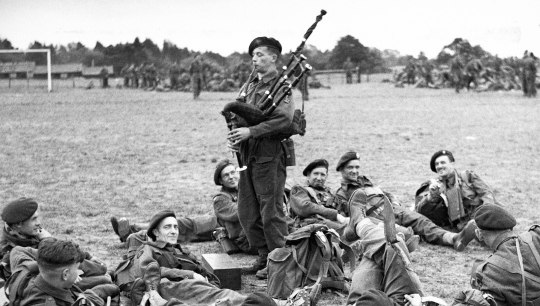


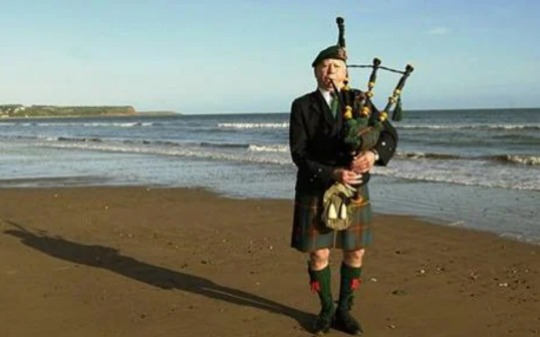
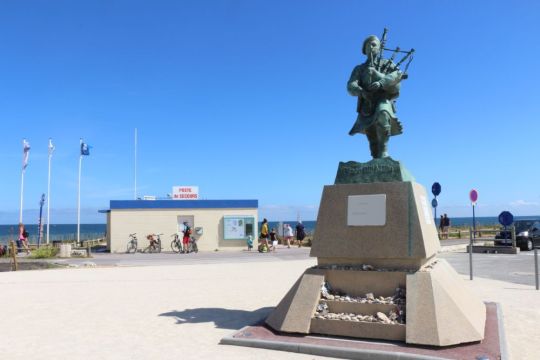
On June 6th 1944 Allied forces stormed the beaches of Northern France on what became known as D-Day.
There were no doubt many acts of bravery on that day when the tide started to turn against the Nazi regime that ultimately ended World War Two. I shall concentrate on one, but will also tell you about a German sniper that day and a wee tenuous brave Canadian.
‘Piper’ Bill Milllin landed on Sword Beach on the Coast of Normandy as part of the 1st Special Service Brigade in the second wave of the operation.
Pipers were banned from being on the frontline during the Second World War because of the number of casualties seen during the First World War. The enemy figured out that the piper helped boost morale to the Allied troops, and they were slaughtered because of this. This led the War Office to restrict their presence in camps as well as on the frontline.
Millin pointed this out to his Commanding Officer Brigadier Lord "Shimi" Lovat Fraser, hereditary chief of the Clan Fraser, who was a law unto himself. “Ah, but that’s the English War Office, Millin,” Lovat told him. “You and I are both Scottish so that doesn’t apply.”
As Bill Millin embarked from the landing craft and waded through chest high water making his way toward dry land, high above his head he carried his pipes, the only weapon he would need that day. Around him bullets flew, mortar shells exploded Bill_Millin1and his friends, comrades and countrymen died, but Bill carried onward.
It was what came next that made Bill Millin a legend! Lord Lovat, the Chief of Clan Fraser and Brigadier of the 2,500 commandos, instructed the 21 year old Bill Millin to fire up his pipes and play a tune to inspire the men. And with the five words ‘Give us “Highland Laddie” man!’, the Legend of ‘Piper’ Bill was born.
Amid the carnage and destruction Bill Millin played as he had never played before. While marching up and down the beach of Normandy, Millin played the tunes ‘Hielan’ Laddie’, ‘The Road to the Isles’ and ‘Blue Bonnets over the Border’, and at one point added ‘The Nut Brown Maiden’ for a redheaded French girl who had strayed out of her home.
The day would see Millin and his unit march four miles inland to a point known as Pegasus Bridge, which was a strategically vital point for the German 21st Panzer Division. D-Day was the turning point in the Allies’ battle against Hitler and ‘Piper’ Bill Millin stands a reminder of the bravery and sacrifice made by ordinary people in extraordinary times.
Facing the soldiers coming ashore that day was Horst Hrubesh, German machine gunner, he too can be seen as a hero of sorts, if you read the poem he penned, I will let you decide;
Scottish soldier play your pipes
Even though your in my sights
Just like me you have a wife
I aim above your head
For full five minutes i fire up high
Keep my bullets up in the sky
No mad piper, you will not die
I will not lay you dead.
Now at my Nazi captains call
He wonders why you do not fall
They drag me from my post in haste
Another gunner i am replaced
In a cell now i await
Whats sure to be a bloody fate
Jack boots stamp across the yard
By my cell with windows barred
Soldier friends i stood beside
Now gather in a long straight line
Blindfold no i did decline
To see their faces full of guilt
As they take my life for i shalt not kill.
Horst Hrubesh was German , but not a nazi, he paid the price for his act on D Day.

The third person to get a mention today is James M. Doohan who landed ashore at Juno beach. Later that day se would be shot 6 times, survive and go on to become Scotty on Star Trek.
Doohan was a commissioned lieutenant with the 14th Field Artillery Regiment of the 3rd Canadian Infantry Division, and was tasked with invading an area of Normandy code-named Juno Beach. As the meme states, Doohan successfully led his men across the beach littered with anti-tank mines, and also managed to take out two German snipers:
Lieutenant Doohan was however not shot by a German sniper. He had been shot by a nervous, trigger-happy Canadian sentry.
Doohan said. "We landed safely, thank God, through those Y-shaped steel barriers you see in the film, tracer bullets, all that, none of our men hurt, and dashed 75 yards to the 7-foot tall dunes," Doohan said.
"Crossed a minefield, found out about it later: It was meant to blow up tanks, and we weren't heavy enough. Moved up through a down - hardly a town just a village - called Graye Sur Mer, saw a church tower that was a machine-gun post, firing off to our left.
Doohan took out the machine-gun post with a couple of shots. "I don't know if they were killed or wounded, but it shut them up," he said. The Canadian soldier later said he didn't notice the gunshot wounds in his legs until he got to the medic who told him;
'You also have four bullets in your left knee.' I said: 'Well, I walked here.'"
#scotland#scottish#d day#world war two#history#piper bill millin#lord lovatt#James Doohan#Canadian#Soldiers#heroes#brave men#bag pipes
122 notes
·
View notes
Text




Fright Rags has released a Captain Spaulding box se that includes a shirt designed by Kyle Crawford, bumper sticker, button, coaster, and chicken leg stress ball, all housed in a Captain Spaulding fried chicken box. Limited to 500, it costs $60.
The House of 1000 Corpses 20th anniversary collection also features a 15-page activity book illustrated by Nathan Thomas Milliner with a four-pack crayons ($10) and a 32-ounce souvenir cup designed by Matthew Skiff ($7).
#house of 1000 corpses#rob zombie#captain spaulding#sid haig#the devil's rejects#horror#fright rags#shirt#gift#toy#kyle crawford#nathan thomas milliner#matthew skiff#bill moseley#sheri moon zombie
31 notes
·
View notes
Text

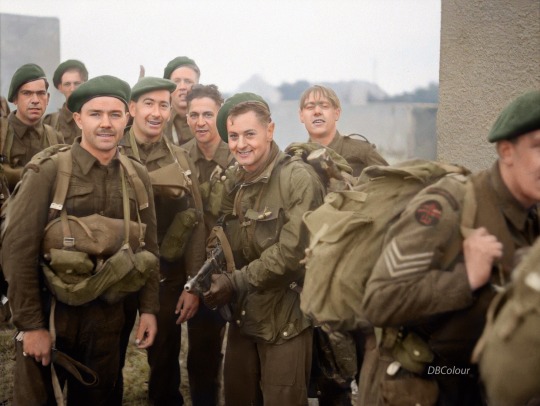
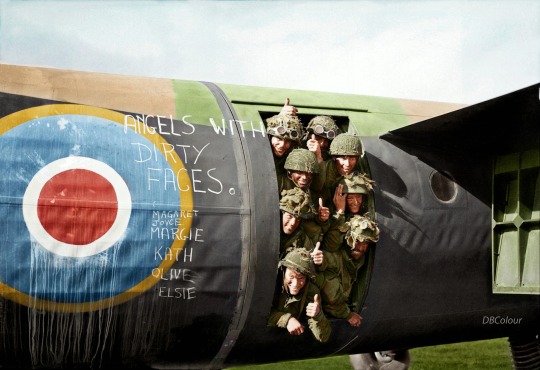
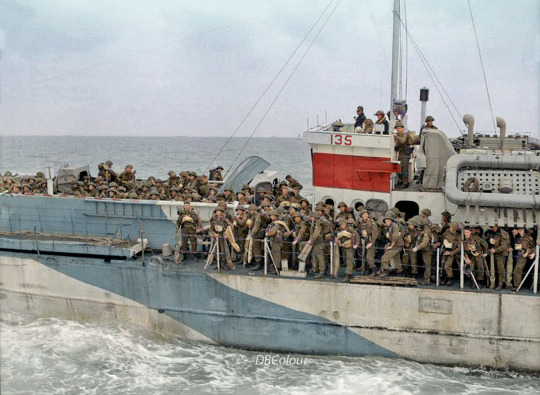
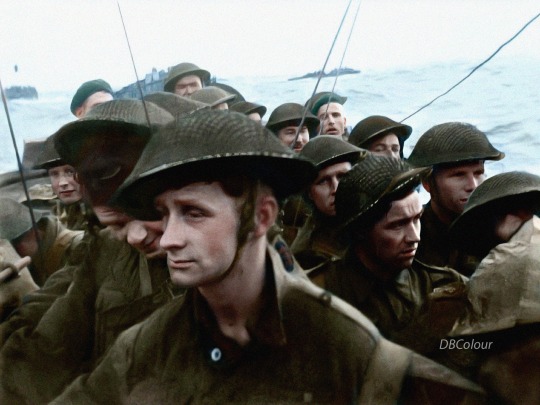

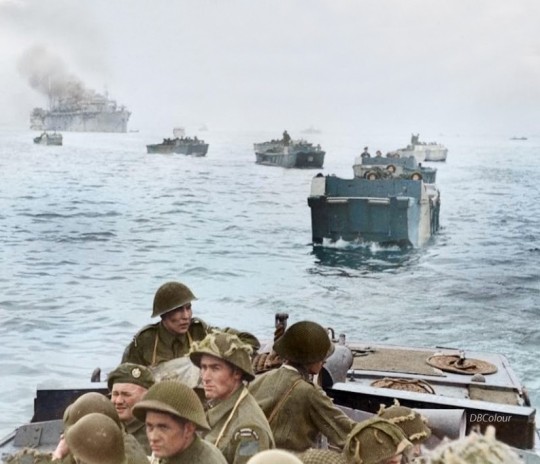
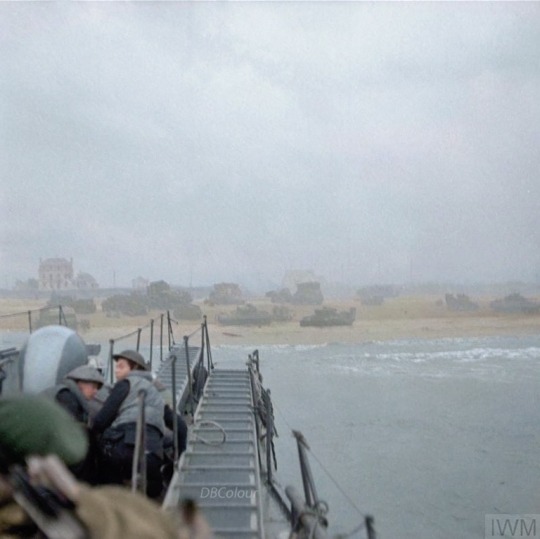
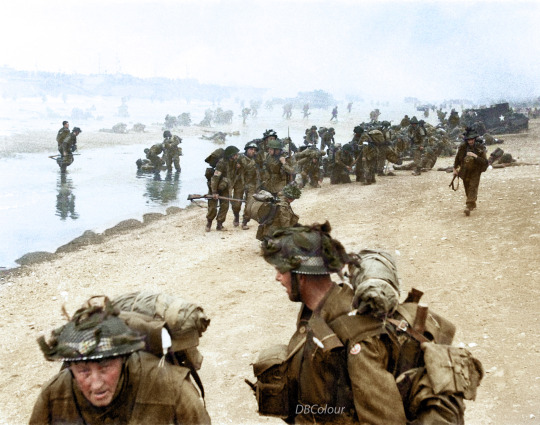
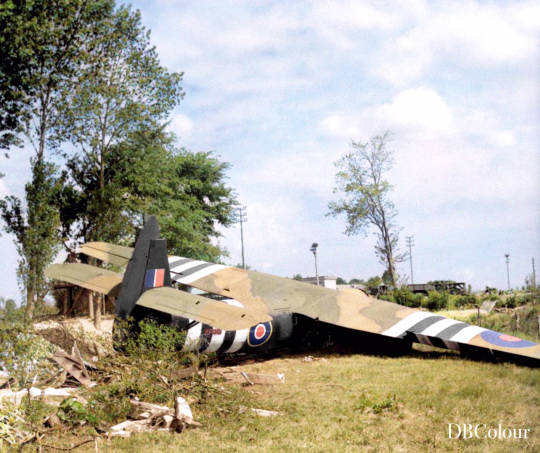
To commemorate the anniversary of D-Day, a short thread of photos colourised by DBColour (Colourising History on Facebook). Descriptions run from top-to-bottom.
Piper Bill Millin, seen here landing on Sword Beach with his bagpipes with Lord Lovat’s Commandos of 1st Special Service Brigade. IWM B 5103.
Commandos of 1st Special Service Brigade after landing on Queen Red beach, Sword area, 6 June 1944. British Airborne troops smile from the door of their Horsa glider as they prepare to fly out as part of the second drop on Normandy on the night of 6th June 1944. LCI(L) 135 of the 2nd Canadian (262nd RN) Flotilla carrying personnel of the North Nova Scotia Highlanders and the Highland Light Infantry of Canada en route to France on D-Day, 6 June 1944. (Library and Archives Canada Photo, MIKAN Nº. 3205043) Film still from the D-Day landings showing commandos aboard a landing craft on their approach to Sword Beach, 6 June 1944.
LCA (Landing Craft Assault) containing soldiers from the Winnipeg Rifles head for the Normandy Juno beach - June 6, 1944.
Commandos approach Sword Beach in a Landing Craft Infantry (LCI). Ahead, the beach is crowded with tanks and vehicles of 27th Armoured Brigade and 79th Armoured Division.
Troops of 3rd Infantry Division on Queen Red beach, Sword area, circa 0845 hrs, 6 June 1944. In the foreground are sappers of 84 Field Company Royal Engineers. Behind them, medical orderlies of 8 Field Ambulance, RAMC, can be seen assisting wounded men.
A Horsa glider near the Caen Canal bridge at Benouville, 8 June 1944. No. 91 (PF800), carried Major John Howard and Lieutenant Den Brotheridge of No.1 Platoon, 'D' Co., 2nd Battalion Oxfordshire and Buckinghamshire Light Infantry in the early hours of D-Day. © IWM B 5232
#d-day#d-day anniversary#ww2#world war 2#second world war#history#military history#british army#lest we forget#remembrance
303 notes
·
View notes
Text
Sing a Song of Sixpence (Joel Miller's Christmas Vacation)

Moth's Masterlist // follow @mothandpidgeon-updates and turn on notifications to stay updated with my fics!
rating: G (fluff)
summary: Sarah requests a special trip over Christmas vacation. Joel does whatever it takes to make her wishes come true.
contents: fluff, 90s nostalgia, colonial america?
wc: 1.2k
a/n: Happy holidays to my Secret Santa, @whocaresstillthelouvre! Surprise but not really. Mallory, i knew we were going to be friends when you told me how much you love Colonial Williamsburg. I couldn't believe I found someone that overlapped in so many of my little niches. So when you told me that I was your secret Santa, I knew your fic was going to be about your favorite place. Thank you for being such a great friend, supporting me and my writing, and being my stoner buddy. I hope you enjoy your gift!
Thank you @schnarfer and @moonlitbirdie for giving this a once over! Dividers by @/saradika-graphics

Sarah clutches her doll as she skips down the red brick sidewalk.
Joel hadn’t realized just how expensive a toy could be until he shelled out the $86 to buy it. Sarah had begged and begged before he gave in and got it for her. “Felicity Doll” had been on every wish list, the American Girl catalogue left open on the kitchen table for two whole years. Sarah read and re-read not only the Felicity series but Addy, Kiersten, and Samantha, too, the paperback books creased and dog eared. This was no passing fad, not a fleeting interest, and so Joel saved up and surprised her with an American Girl doll of her very own for her birthday.
She knew what was in the tall, rectangular box before she’d even unwrapped the damn thing, screeching and running around the living room in celebration. Sarah loved the doll, taking it everywhere with her, tucking it in bed beside her. Best money Joel had ever spent.
Except Felicity had a plethora of accessories and outfits, furniture and accouterments that all cost a handsome sum. More catalogues came, glossy pages with marker drawn circles around Felicity’s tea set and writing desk and pony. (“The doll has a pony?” “It’s in the books, Daddy!”) There were cookbooks and paper dolls and Sarah-sized colonial dresses that she desperately needed. It seemed that Joel was personally bankrolling the Pleasant Company.
And now he’d agreed to bring Sarah to Colonial Williamsburg. He really hadn’t had the heart to say no to her when she ask that they take a family trip there over winter break though he knew it would cost him an arm and a leg.
“Wouldn’t you rather go to Disney World?” Tommy asked.
Joel shot him a look. Disney would’ve cost three times as much but it wasn’t about the money. He was proud of his little girl for being a bookworm, choosing museums and butter churns over roller coasters and Minnie Mouse.
“It’s where Felicity’s from,” she insisted.
Sarah leads Joel by the hand down Duke of Gloucester Street. The quaint little houses are all decorated for the season– around each doorway is an evergreen garlands accented with fat, red bows. There’s a chill in the air. He hadn’t considered the weather in Virginia when he’d planned this vacation. Sarah doesn’t seem to notice, excitedly pointing out the carolers on the corner and the horse drawn carriage conveying tourists down the sandy street.
Sarah devours every little detail, listening with eyes like saucers as the interpreters dressed in old fashioned costumes drone on about milliners and beeswax candles.
Joel’s mind just keeps slipping back to the fact that he and Tommy aren’t working right now. A whole week with no income.That’s going to hurt when the credit card bill comes in.
”D’you think they ever sniped a redcoat with one of those?” Tommy asks on a tour of the Governor’s Palace, nodding towards one of the many guns hanging on the ceiling.
Sarah shushes him.
”Hey,”Joel whispers to his brother. “Remind me when we’re back at the motel, I’ve got to call and get those tiles ordered for the duplex project.”
”C’mon man. You’re thinking about work now?” Tommy complains.
”Can’t lose another day. Order it now, it’ll be waiting for us when we’re back,” Joel explains.
“Daddy! You’re not listening!” Sarah hisses.
“Sorry, babygirl,” he says, squeezing her hand in his.
He tries to pay attention, he really does. Joel’s never had much of a mind for history. Dates and places and stuffy old men. The buildings are interesting, at least. He amuses himself wondering what it would be like to build a house like they did in the olden days. A rough saw and a chisel and his bare hands. Like a pioneer on the homestead.
There’s a gift shop at the end of the tour. Of course. Joel lets out a sigh of resignation. Sarah knows better than to ask but she’s eyeing a tin whistle and a book about ghost sightings.
“Pick one,” Joel offers, hoping she goes for the book. The last thing he needs is Tommy’s yammering and the squeal of Yankee Doodle for the rest of the trip.
Her brown eyes move between the two souvenirs, lips twisted in thought.
“Shit. I’ll buy you both if your Dad’ll wear this,” Tommy says with a laugh. He’s holding up a little felt tricorn hat meant for elementary school kids.
”Really?” Sarah asks, all bright and giggling.
Joel glowers.
Dinner is a fifteen dollar hamburger at one of the historical taverns. Sarah’s doll gets its own seat at the table, a paper napkin tucked into the collar of its dress. Joel’s able to pawn the hat off on Sarah but not before Tommy got a photo on his disposable camera.
“That’s going on the fridge,” he chuckles.
As Joel pays the bill (noting the price of Tommy’s three beers), there’s a rumble of drums.
“What’s that?” Tommy asks, craning his neck towards the window.
“The militia’s coming through,” the waitress says, clearing the dish from Sarah’s ice cream sundae (the historical accuracy of which is questionable). “They’ll march in for the fireworks.”
“Fireworks!” Sarah gasps.
Joel sighs. He’s exhausted, out all day in the cold wrangling his brother and his daughter. His knees are aching and he’s ready to call it a day and go back to the motel. But Sarah is practically bouncing in her seat.
Joel bundles himself up once again and the trio join the crowd that lines the street. A fife and drum corps in their scarlet uniforms march past followed by an officer on horseback. The sun has long set and the air nips at Joel’s throat. He wishes he had a scarf, could probably pick one up in yet another gift shop but it would surely cost a small fortune. He hopes these fireworks will be over soon so he can put his feet up.
The little town looks quite festive in the night. Candles glow in every window and the street lamps cast a warm light over the tourists. A massive evergreen on the Palace Green twinkled with modern lights but it only adds to the atmosphere.
Without warning, the first firework shoots into the sky, its bang makes Tommy jump. It bursts into a shower of silver. The other spectators cheer and more fireworks follow— red and blue, green and gold.
Sarah’s gloved hand wraps around Joel’s. Her face is turned up to the sky, illuminated by the colorful fireworks. Her eyes round with wonder, sparkling pink and white from the cascade of sparks above.
She’s having the time of her life. And she deserves it. Sarah’s a good kid. Polite, studious, thoughtful. Joel’s always been proud of her though he has no idea how she turned out so sweet considering he and Tommy have been the ones that raised her. This is what it’s all for, he reminds himself. The hard work and long hours, the never ending stress of bills for things he can’t afford. It’s all for her.
She turns to find Joel watching her, his heart swollen in his chest.
“Thanks, Daddy,” she says. She squeezes his hand and pulls her doll close to her chest.
That thing was worth every penny.

Happy holidays to everyone! Special shout out to the tent pitchers and all of my moots but also to anyone that's read my fics this year. Thank you for your support.
72 notes
·
View notes
Text
I know I've talked about how Mihawk sews and embroiders, and probably was already making/embellishing his clothes since his first appearance, (roger's execution pink tulip patches my belove-eds) but I'd like to emphasize that this man is 100% his own combination tailor/milliner/cobbler. He sews his clothes and makes his hats and there's whole 50s housewife-esque sewing room in his castle. Those v-notch-waistband pants are a perfected pattern and you know it. Whenever he meets up with Shanks he spends 30% of their time together fighting and the other 70% darning Shanks' shirts. He handmade Perona's glow-up fit because nothing hit right for her at the local op hot topic. Definitely monograms his towels. Gets bored in the Cross Guild one day and spends the better part of a week hemming Crocodile's pants and letting out his waistcoats. Keeps a needle and thread pinned inside his coat. Bills the WG for "upkeep expenses" when he decides to go ham on the latest silk exports.
#one piece#op#opla#opla mihawk#dracule mihawk#hawkeyes mihawk#one piece mihawk#mishanks#I pegged that man as a crafter the moment I saw opla him#him sewing is everything to me understand my vision#HE SEWS HIS OWN CLOTHES THERE'S NO OTHER EXPLANATION
342 notes
·
View notes
Text

The British 2nd Army, Commandos of the 1st Special Service Brigade, landed from an LCI(S) (Landing Craft Infantry Small) on ‘Queen Red’ Beach, the Sword Area, approximately 8.40 am on 6 June 1944. The brigade commander, Brigadier Lord Lovat DSO MC, can be seen striding through the water to the right of the column of men. The figure nearest the camera is the brigade’s bagpiper, Piper Bill Millin. Lord Lovat exercised his right as Chief of Clan Fraser to have a personal piper accompany him in the vanguard of the D-Day landings on Sword Beach
27 notes
·
View notes
Text
WHO I WRITE FOR *will be continuously updated
(Platonic means familial and/or friendship)
9-1-1
Romantic & Platonic: Chimney Han, Eddie Diaz, Evan “Buck” Buckley, Hen Wilson, Maddie Buckley
Only Platonic: Athena Grant, Bobby Nash
Bridgerton
Romantic & Platonic: Anthony Bridgerton, Benedict Bridgerton, Cressida Cowper, Eloise Bridgerton, Francesca Bridgerton, Kate Sharma, Simon Bassett, Tilly Arnold
Only Platonic: Daphne Bridgerton, Gregory Bridgerton, Hyacinth Bridgerton, Violet Bridgerton
DC Movies/Arrowverse
Romantic & Platonic: Alex Danvers, Bruce Wayne (Patterson), Kara Danvers, Lena Luthor, Selina Kyle (Patterson)
Call of Duty
Romantic & Platonic: Alejandro Vargas, Alex Keller, John Price, Johnny MacTavish, Kate Laswell, Kyle Garrick, Simon Riley
Criminal Minds
Romantic & Platonic: Aaron Hotchner, Derek Morgan, Elle Greenaway, Emily Prentiss, Jennifer Jareau, Luke Alvez, Spencer Reid, Will LaMontagne
Only Platonic: David Rossi, Penelope Garcia
Game of Thrones
Platonic & Romantic: Brienne of Tarth, Cersei Lannister, Jamie Lannister, Jon Snow, Margaery Tyrell, Ned Stark, Robb Stark, Sansa Stark, Theon Greyjoy
Grey’s Anatomy/Station 19
Platonic & Romantic: Addison Montgomery, Alex Karev, Amelia Shepherd, Andrew DeLuca, April Kepner, Arizona Robbins, Ben Warren, Callie Torres, Carina DeLuca, Derek Shepherd, Jack Gibson, Jackson Avery, Jules Millin, Jo Wilson, Lexie Grey, Lucas Adams, Lucas Ripley, Mark Sloan, Maya Bishop, Monica Beltran, Nathan Riggs, Teddy Altman
Only Platonic: Meredith Grey, Owen Hunt
Harry Potter
Romantic & Platonic: Bill Weasley, Cedric Diggory, Charlie Weasley, Draco Malfoy, Fleur Delacour, Ginny Weasley, Harry Potter, James Potter, Lily Evans, Nymphadora Tonks, Remus Lupin, Ron Weasley, Sirius Black, Viktor Krum
— MCU/Spiderverse
Platonic & Romantic: Bucky Barnes, Bobbi Morse, Carol Danvers, Clint Barton, Gamora, Kate Bishop, Loki, Maria Hill, Melina Vostokoff, Maria Hill, Miguel O’Hara, Natasha Romanoff, Peter B. Parker, Peter Parker (AG), Peter Parker (TH), Pietro Maximoff, Sam Wilson, Scott Lang, Sharon Carter, Stephen Strange, Steve Rogers, Thena, Thor Odinson, Tony Stark, Wanda Maximoff, Yelena Belova
Only Platonic: Agatha Harkness, Pepper Potts
Star Wars
Romantic & Platonic: Anakin Skywalker, Han Solo, Leia Organa, Luke Skywalker, Obi-Wan Kenobi, Padmè Amidala, Poe Dameron, Rey Skywalker
Stranger Things
Romantic & Platonic: Eddie Munson, Chrissy Cunningham, Jonathan Byers, Nancy Wheeler, Robin Buckley, Steve Harrington
Only Platonic: Jim Hopper, Joyce Byers
Superntural
Platonic & Romantic: Bela Talbot, Dean Winchester, Gabriel, Jo Harvelle, Sam Winchester
Only Platonic: Bobby Singer, Ellen Harvelle, John Winchester
The Bear
Romantic & Platonic: Carmy Berzatto, Natalie Berzatto, Richie Jerimovich
— The Rookie
Angela Lopez, Aaron Thorsen, Bailey Nune, Jackson West, John Nolan, Lucy Chen, Nyla Harper, Tim Bradford, Wesley Evers
— The Vampire Diaries
Caroline Forbes, Damon Salvatore, Elijah Mikaelson, Enzo St. John, Hayley Marshall, Klaus Mikaelson, Kol Mikaelson, Rebekah Mikaelson, Stefan Salvatore, Tyler Lockwood
— Top Gun
Bradley “Rooster” Bradshaw, Jake “Hangman” Seresin, Natasha “Phoenix” Trace, Nick “Goose” Bradshaw, Penny Benjamin, Pete “Maverick” Mitchell
#marvel#dc#9 1 1#greys anatomy#grey’s anatomy#the rookie#fanfic#fanfiction#game of thrones#house of the dragon#hotd fanfic#marvel fan fiction#station 19#star wars fanfiction#call of duty#cod modern warfare#criminal minds#across the spiderverse#hp marauders#harry potter fan fiction#cod x reader#cod fanfic#writing#send me requests
20 notes
·
View notes
Photo

Piper Bill Millin landing with Commandos of 1st Special Service Brigade from a LCI(S) (Landing Craft Infantry Small) on 'Queen Red' Beach, SWORD Area, at la Breche, Normandy, France. D-Day, 6 June 1944
40 notes
·
View notes
Text
Toffee Duck Bill Cap! ~HATMOGUL
(Beaver Felt Cheetah Print w/ Fox Pom Pom) 00575
#otisdamón #hatmogul #arttherapy #millinery #milliner #menwhosew #atlanta #collegepark #nyc #longisland #fashion #fashionblogger #style #styleblogger #fyp #fypシ #texture #blackowned #legacy #mentorship
2 notes
·
View notes
Text

PHOTOSHOOT: TOKION FACTORY
Back in December 2010, Marina (and the Diamonds) was photographed by JUCO for Japanese culture magazine Tokion Factory!
All of the colorful looks were styled by JAK. Makeup by Amy Chance and hair by John Blanie.

The first set of photos see Marina donning a beautifully crafted intricate sequin mini dress with Christmas sweater-themed motifs from Ashish's Fall/Winter 2009 runway show.

The black feather and gold chain bracelet, she wears on her right wrist, is by Candace Ang.

For her second look, Marina wore a purple sheer chiffon blouse with ruffled details, and pleated and gathered mini skirt seen in OLIMA's Fall/Winter 2010 debut colleciton!
Los Angeles-based iconic milliner Gladys Tamez Millinery created Marina's green felt hair beret...

...while Jimmy Choo is the mastermind behind these sexy Magnum yellow python and mesh sandals.

Next up, Marina poses in a black satin dress which she crowned with a golden metal spike visor from Ella Zahlan's "Michael Jackson" collection!

The Greek-Welsh beauty also wore a golden fringe necklace by Iosselliani, similar pictured to the one above!

Marina stuns in a black velvet mini dress with glass crosses all over from iconic designer Jeremy Scott's Fall/Winter 2010 collection which she paired with a Gladys Tamez Millinery Fall/Winter 2010 feather fascinator.

For the penultimate look, Marina takes a stance in Brian Lichtenberg faux denim print bodysuit with padded shoulders. Brian's designs are also loved by other singers like Lady Gaga, Beyoncé and Katy Perry.
Her mustard-yellow high-waisted pants from emerging designer Katie Ermilio's 2009 debut collection!

I love mismatched earrings and Marina's definitely fit the bill here!
She paired a single long chain fringe earring by Iosselliani with a white spike drop earring by former jewerly brand Kites & Metal.

Marina completed her colorful look with these Ashish Spring/Summer 2010 metallic gold leather woven platform wedges!

For the final look, Marina is sporting a bodysuit version of this Falguni Shane Peacock Fall/Winter 2010 runway look which was worn with OLIMA Fall/Winter 2010 black wool pleated mini skirt.

Marina's fringe metal necklace with star-shaped crystals on top is yet another beauty signed by Iosselliani!

Lastly, she re-wore her Candace Ang feather bracelet and multiple rings by Han Cholo including his sterling silver snake ring with red stone in the center ($270.00).
#December 2010#Ashish#Candace Ang#OLIMA#Gladys Tamez Millinery#Jimmy Choo#Ella Zahlan#Iosselliani#Jeremy Scott#Brian Lichtenberg#Katie Ermilio#Han Cholo#Kites and Metal#Falguni Shane Peacock
4 notes
·
View notes
Text



Officer's Batledress Blouse of the 1st Special Service Brigade from the British Empire dated to 1944 on display at the Highlander's Museum in Inverness, Scotland
This uniform was worn by Brigadier Lord Lovat as Commander of the 1st Special Service Brigade. Lovat led this Commando formation during raids on Norway, Dieppe and then ashore on D-Day. Simon Fraser, 15th Lord Lovat was represented in the film The Longest Day, about the D-Day landings as wearing a white jumper and wielding a Mannlicher rifle. In reality he wore this uniform and used an American made M1 Carbine.
Lord Lovat instructed his personal piper, Private Bill Millin, to pipe them as they stormed the beaches despite specific orders not to. Private Millin cited these orders and army regulation. Lord Lovat reportedly replied with:
"Ah, but that's the English War Office. You and I are both Scottish, and that doesn't apply"
Despite this archaic attitude his championed the use of irregular warfare and Commando units during the war against the fascists.
Photographs taken by myself 2024
#uniform#military history#fashion#second world war#british empire#scotland#scottish#20th century#highlanders museum#inverness#barbucomedie
3 notes
·
View notes
Text













On 17th August 2010 Bill Millin, piper to Lord Lovat at D Day, died, aged 88.
Millin had left Sandyhills near Glasgow to join the Highland Light Infantry, Queen’s Own Cameron Highlanders, No. 4 Commando.
On June 6th 1944, the 21-year-old had been ordered to play against the wishes of the top brass. He was the personal piper to Lord Lovat - who, despite there being a ban on pipers being allowed on the frontline, defied the War Office's orders and brought him to Sword Beach.
Pipers were banned from being on the frontline during the Second World War because of the number of casualties seen during the First World War. The enemy figured out that the piper helped boost morale to the Allied troops, and they were slaughtered because of this. This led the War Office to restrict their presence in camps as well as on the frontline.
After the war Bill settled in the lovely wee devon town of Dawlish, the museum there has his pipes on display as seen in the second pic, the first shows Bill at Edinburgh Castle in 2003.
The first pic is Bill, reunited with Josette Gouellain in Ranville, Normandy. The two met 50 years ago when Josette asked bill to play something just for her. The Scot complied with "The Nut Brown Maiden" in admiration of the little girl's hair and eyes.
70 notes
·
View notes
Text






Gutter Garbs has released six House of 1000 Corpses shirts designed by Sam Coyne, Nache Ramos, Nathan Thomas Milliner, Mister Black & Graham Humphreys, and Matthew Skiff & Brandon Stecz ($30).
The collection also includes four enamel pins design by Skiff ($13), a Captain Spaulding 15x12 metal sign ($20), and a set of five 10x8 lobby cards by Beyond Horror Design. They'll ship the week of March 17.



#house of 1000 corpses#rob zombie#captain spaulding#sig haig#bill moseley#shirt#enamel pin#gift#sam coyne#nache ramos#nathan thomas milliner#mister black#graham humphreys#matthew skiff#brandon stecz
14 notes
·
View notes
Photo

The fashion designer Mary Quant had perfected key aspects of 1960s British pop culture long before midnight chimed on the last day of 1959. The Chelsea girl and her try-anything attitude, her short, narrow garments casually bought from a Kings Road boutique – Quant had been working on these since the mid-50s. It took the zeitgeist until at least 1963 to catch on, let alone catch up.
Quant, who has died aged 93, opened her first Kings Road shop, Bazaar, in 1955, the year after Gabrielle “Coco” Chanel ended her postwar hiatus and reopened her Paris salon. They shared a similar ambition: to clothe young, independent women unsuited to fashion dominated by Christian Dior’s 1947 New Look and the work of the grand couturiers. Quant and Chanel designed their clothes to allow new physical and mental freedoms; Quant (unlike Chanel) was also in favour of fun, in reaction to her own teen years under postwar austerity.
Life then had been rationed, begrudged; almost the only place where the young could create their own excitement was at art college, with the Chelsea Arts Ball an annual chance for frivolity. At that ball a teenaged Quant, clad chiefly in balloons, hooked up with a fellow Goldsmiths’ College student, Alexander Plunket Greene, who swanned around long-haired in his mother’s silk pyjama top, trumpet in one hand and film script in the other.
“Life … began for me when I first saw Plunket,” she wrote in her 1966 autobiography Quant By Quant. He was short on ready cash, with an income of “four bob a day,” he recalled, “if one bought cigarettes one couldn’t go the cinema too”, but posh and sexually sophisticated. “Alexander had no use for straightforward sex at all,” Quant said, and he also was consistently unfaithful.
He came from a family said to be Evelyn Waugh’s model for the Flytes in Brideshead Revisited and was at art college crossing social classes. She, born in Blackheath, south-east London, had been persuaded by her parents, Jack and Mildred, both schoolteachers, to study art rather than fashion on leaving Blackheath high school.
After Goldsmiths’, she worked as a trainee assistant at the Mayfair milliner Erik. Quant picked up pins with a magnet and counted out the ration of one chocolate biscuit a day for the assistants, who were so poorly paid that, as Cecil Beaton exaggerated, “there were weeks when only an aspirin touched Mary’s lips and, but for the Jamaicans in nearby Claridge’s kitchens handing over their refuse bins, she would have starved”.
The creation of a hat was Quant’s practical introduction to fashion, and the sculptural moulding that quickly shapes millinery influenced her approach to clothes. She had reservations about “spending three days making one hat which would be worn for one afternoon by a grumpy, spoiled middle-class woman”, learned dress-pattern-cutting at night school, to put outfits together for herself, and briefly worked for the Butterick pattern company.
Plunket’s poverty ended on his 21st birthday when he inherited £5,000; advised by the entrepreneur Archie McNair, who became Quant’s financial brain thereafter, he took a mortgage on a property on the corner of Markham Street and Kings Road, Chelsea.
He wanted to open a nightclub in its basement, but could not get an alcohol licence, so that level became Alexander’s Restaurant, a bistro influenced by his friend Terence Conran and the recipes of Elizabeth David. Plunket told McNair that his girl was good at clothes, and Quant set up Bazaar on the ground floor.
Bazaar acted in lieu of the desired club, with wine or scotch under the counter and girls shedding their garments on the floor, attracting anti-establishment former art-school characters who had gone into photography and journalism. It was hardly a shop – the preferred word was boutique anyway – since the couple never understood business. Incoming bills were piled up and those at the top were paid – Conran said you could not open the front door for writs. They were part of the new bohemian Chelsea set and their stories became SW3 legend.
Quant bought fabric from Harrods at retail prices on a Plunket family account, and had to sell each batch of clothes before she could buy more; when she ran out of stock, she simply shut up shop and started sewing. When she asked manufacturers to make for her, few would, since her ever-skimpier, shorter shapes did not promise big enough profit margins.
Besides, Bazaar might be closed for weeks with a “gone fishing” sign placed in the window while Quant and Plunket went on holiday. They wanted a wider life, flying off in chartered planes to gamble in Le Touquet: because of the era’s currency restrictions, Quant smuggled out in her knickers the cash to buy a French home. They ran an illegal chemin-de-fer game in the Quant delivery van parked in a different Chelsea street each Thursday.
By the late 50s Quant had synthesised her Chelsea girl look from elements of left bank kooky beatnik and practical details of American sportswear, plus her preference for vulgarity over good taste. Then she began supplementing it with memories of her ideal – a girl of about eight glimpsed during a childhood dancing class, who had a Dutch doll haircut and wore a dark skinny knit, very short pleated skirt, white socks and black patent shoes that focused on the boot button of their ankle strap. Quant made similar clothes the basis of the dolly-bird look of the 60s.
In retrospect, this sexualised projection of a very young girl feels disturbing. Dolly-birds skipped, and knocked their knees, and pointed their toes in what Quant called “the wet-knicker pose”. Stocking-tops and suspenders were slowly replaced by patterned or coloured tights, and Quant developed stretchy undergarments no heavier than those tights.
Quant’s own hairdresser, Vidal Sassoon, cut geometric variants of the bob. The whole ensemble pointed in one direction. “The crotch is the most natural erogenous zone,” said Quant, directing her models in their Banlon, Bri-nylon and PVC mini shifts to prance for maximum pelvic thrust, and claiming that her husband once cut her own green-dyed pubic hair into a heart shape. Angry bowler-hatted men beat with fists and umbrellas on Bazaar’s window, Quant recalled: “It got to them in some way, what I was doing.”
Being a dolly-bird was just about affordable on teen pay. Quant went wholesale in 1961, and two years later launched mass-market fashions under the name Ginger Group – ginger, prune and grape being the previously non-fashion colours that she favoured. She also signed on as an adviser with the US retailer JC Penney: from then on she could afford to hop on big jet planes to distant destinations at whim, as she had once done buses on Kings Road; her personal transport was a black Mini car with a black leather interior.
But she was never comfortable with large-scale clothes production and soon realised that the real money lay in franchising household goods such as bedding, and, even more, in designing faces.
Mary Quant cosmetics arrived in 1966 and were more original than her clothes. Cosmetic containers had traditionally been designed as ornaments for dressing tables, with lipsticks and compacts based on 18th-century boudoir trinkets. Quant observed that professional models painted their faces like canvases with brushes and theatrical grease sticks, and as an art student she had worn the contents of her watercolour paint tubes. She commercialised these ideas, and the daisy logo that was always the doodled focal point of her dress sketches then appeared on makeup packaging – yellow tins of crayons, and simplified bottles, sold not from store counters but from “pods” that might have been moon landing capsules.
Skin cream was sold with matching vitamin pills. Bazaar closed in 1969, by which time 7 million women worldwide had Quant’s label in their wardrobe.
Quant cosmetics also dwindled away in the 70s but were revived under licence in Japan in 1984, and re-exported to the west in the 90s. Japan was Quant’s most logical market, for young women there have cultural sanction to present themselves as prepubescent – pretending to be very young is seen as liberating, which appealed to Quant, who said: “I grew up not wanting to grow up, growing up seemed so terrible, children were free and sane.”
She eventually resigned as director of the company, and lost control in 2000 of her name and her daisy, but stayed as consultant. She also began designing clothes for the New York store Henri Bendel, which realised her vintage work was being collected. Her approach was understood as being as dramatically simple as Chanel’s – “Only I had better legs than Chanel,” said Quant.
Her first retrospective exhibition, Mary Quant’s London, in 1973 at the Museum of London, had a 50s gloom room so visitors could appreciate the difference she had made, for which she was appointed OBE in 1966 – a very big deal at the time. She was made a dame in 2015, and a companion of honour this year.
When the V&A put on a lifetime retrospective show in 2019, it sourced exhibits radically by asking the public to loan Quant clothes they had kept. Many of those selected were displayed with old photographs of their owners wearing them, captioned with the outfit’s personal “story”. The exhibition drew huge crowds, with visitors talking to each other – a rare occurrence – about what it had been like to wear Quant fashion when it was new.
Although the Chelsea set regarded home as the place you went when there was nothing better to do, Quant loved her house in Grasse, Provence, and a retreat in Guildford, Surrey. There she gardened by torchlight when day faded, and installed a 60s Claes Oldenburg plastic statue commemorating dolly-bird knees.
The turbulent marriage of the Plunket Greenes, which had begun in 1957, ended with his death in 1990. Her later partner, Antony Rouse, died in 2014. Quant is survived by Orlando, the son from her marriage, and three grandchildren.
🔔 Mary Quant, fashion and cosmetics designer, born 11 February 1930; died 13 April 2023
Daily inspiration. Discover more photos at http://justforbooks.tumblr.com
35 notes
·
View notes